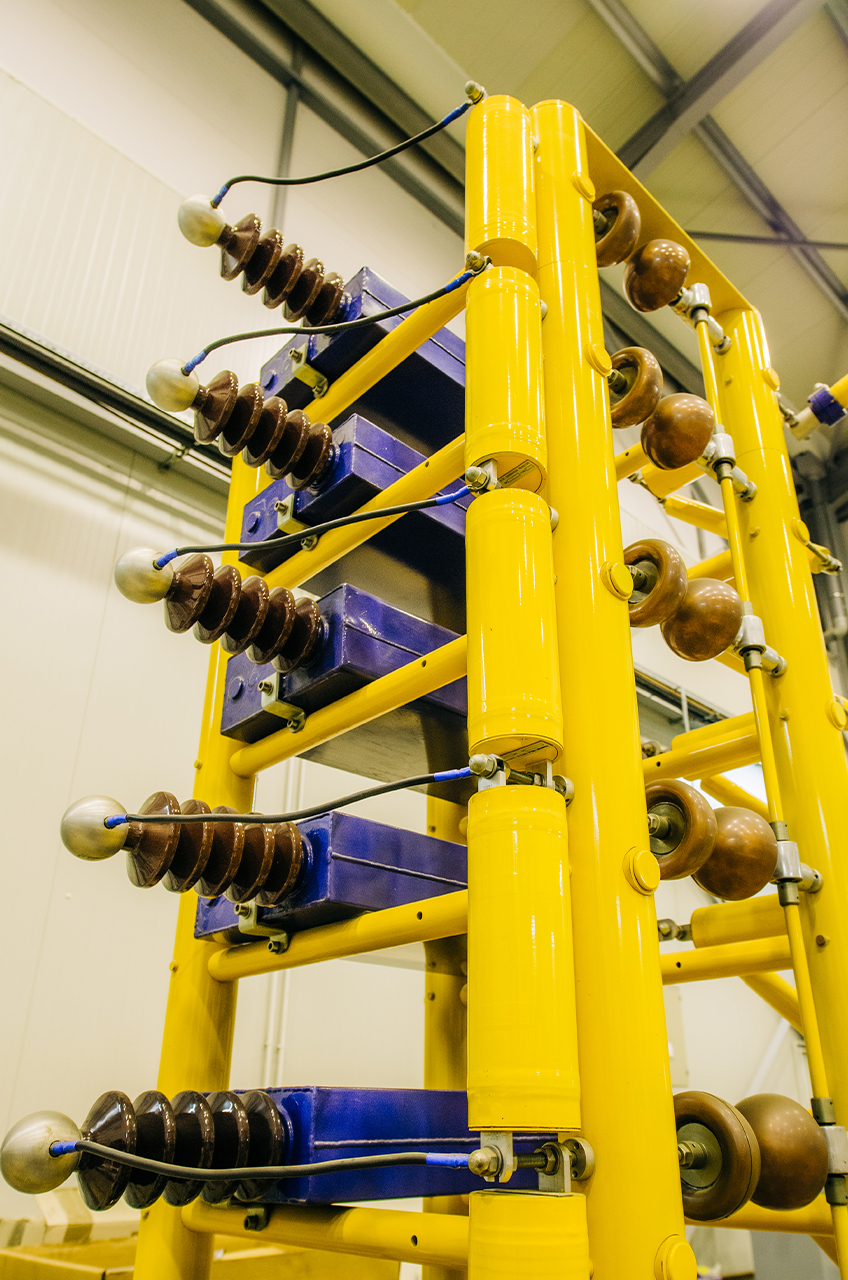Our laboratory is equipped with special generators and systems, allowing us to carry out all the required tests related to lightning protection and the study of lightning phenomenon. In addition, to fully cover all the necessary tests, our laboratory has special instruments for tests and measurements of natural sizes of metal components as well as special devices for environmental ageing.
It is the heart of our laboratory equipment as it is its most basic part. This generator enables us to simulate direct lightning strikes and to examine the behavior of lightning protection components and devices, but also to carry out research for the development of new technologies and innovations in the field of lightning protection.
Impulse voltage is one of the main tests to check the insulating properties mainly of transformers, cables, terminals and insulators in order to determine the resistance of their insulation surge overvoltages.
Impulse current generators 8 / 20μs are the main means of control and testing of energy (XT) and telecommunication surge protection devices. Impulse current tests 8 / 20μs can be applied on the surge protection devices at 230Vac voltage at any angle (0ο - 360ο) and at voltage 0 - 90 Vdc.
Combination wave (CW) generators, producing an open circuit impulse voltage 1,2/50μs and a short circuit impulse current 8/20μs wave. These generators are used for surge immunity tests as per EMC directive for LV products as well in surge protection applications for testing T3 low voltage SPDs or Telecom & Signaling SPDs. The CW can be coupled under DC (0-90V) or AC (0-230V) at any angle between 0o – 360o degrees.
Since a component when installed in the atmosphere will be subjected to an environmental stress either by natural means (eg salt and rain) or by artificial means (eg exhaust pollutants) it is necessary to test its resistance to corrosion. At the same time in many cases such as lightning protection and earthing components before and after the given environmental ageing it is necessary to follow a series of electrical and mechanical tests ensuring that the components will continue to operate effectively even after exposure to artificial ageing.

